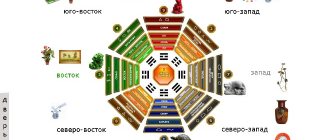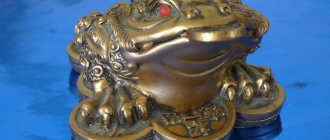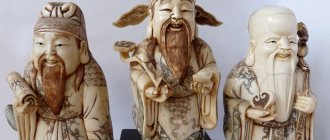Author: pynh
November 14, 2021 11:18
Tags: children stories how it was
6157
12
In peasant families in Rus', children were taught very early on responsibility and systematic work: this was both the main issue of education and the key to survival. Moreover, the views of our ancestors on this process would hardly please modern teenagers...
0
See all photos in the gallery
The most important thing is that the approach to their heirs among the people was not just strict, but very strict. Firstly, no one then considered children equal to their parents. And it was in the first years of a child’s life that adults saw the key to what kind of person he would become. Secondly, the authority of mother and father in peasant families was indisputable. Usually the parents were unanimous in their views on the upbringing and responsibilities of the child, and even if they did not agree with each other on something, they never demonstrated it publicly, so the child had no chance of “pulling” one of the parents to his side. Thirdly, it was not customary to “tweak” with either girls or boys and spoil them in vain. Usually, assignments between household members were distributed by the head of the family in an orderly tone, and no one contradicted him in response. At the same time, the child was always praised and encouraged for successfully completing a task, emphasizing in every possible way that he had benefited the whole family. Child labor is the involvement of children in work on a regular basis. Currently, in most countries it is considered a form of exploitation and, according to UN Convention N32 “On the Rights of the Child” and acts of the International Labor Organization, is considered illegal.
×
0
Our great-grandfathers could not even dream of such a thing. Maybe that’s why they entered adulthood perfectly prepared and adapted?
0
“A father teaches his son bad things”
The age criteria for children were very clear, and, accordingly, their work responsibilities were also clearly divided. Age was measured in seven years: the first seven years were childhood or “infancy.” The babies were called “child”, “baby”, “kuvyaka” (crying) and other affectionate nicknames. In the second seven years, adolescence began: the child became a “youth” or “youth”, boys were given ports (pants), girls were given a long girl’s shirt. The third seven-year period is adolescence. As a rule, adolescents mastered all the necessary skills for independent living by the end of adolescence. The boy became his father’s right hand, a substitute during his absences and illnesses, and the girl became a full-fledged assistant to her mother.
Unfavorable symbols for the Ba Gua children's area
Symbols that are unfavorable for the children and creativity sector are - a fireplace (do not place it in the western part of the house or individual rooms, this will worsen the luck of your children and complicate relationships with them), candles, triangular shapes, red and green colors, symbols of water in significant quantities. Avoid all this in the west of your home.
When using metal objects, do not forget that they should not cause feelings of aggression or suppression; avoid decorating your home with knives, daggers, swords and other weapons.
Creating good Feng Shui in your home, activating the children's zone, using personal auspicious directions for your child will help him grow up healthy, strong, calm, and will also ensure that your children remain a loving part of the family. A home filled with favorable, clean energies, in which good Feng Shui prevails, usually very rarely encounters the problems of naughty or “difficult” children.
© V.G.
What a boy could do 100 years ago
0
Perhaps the requirements for boys were stricter than for girls, because it was the sons who were supposed to grow up to be future “breadwinners”, “carers” and protectors. In a word, real husbands and fathers.
In the first seven years of his life, the boy learned many of the basics of peasant labor: he was taught to care for cattle, ride a horse, help in the field, as well as the basics of craftsmanship. For example, the ability to make toys from various materials, weave baskets and boxes, and, of course, bast shoes, which had to be strong, warm, and waterproof, was considered an absolutely necessary skill. Many 6- and 7-year-old boys confidently helped their fathers in making furniture, harness and other household items. The proverb “Teach a child while it lies across the bench” was not an empty phrase in peasant families. In the second seven years of life, the boy was finally assigned stable and varied economic responsibilities, and they acquired a clear gender division. For example, not a single boy was obliged to care for his younger brothers and sisters or to garden, but he had to learn to plow and thresh - girls were not involved in such physically difficult work. Often, already at the age of 7-9, peasant boys began to earn extra money “with people”: their parents gave them to be shepherds for a reasonable fee. By this age, it was believed that the child had already finally “entered the mind”, and therefore it was necessary to teach him everything that the father could and knew.
Working on the ground
0
In Russian villages, farming was a confirmation of full male status. Therefore, teenage boys had to work in the fields. They fertilized the soil (spread manure across the field and made sure that its lumps did not impede the work of the plow), harrowed (loosened the top layer of soil with harrows or hoes), led a horse harnessed to the harrow by the bridle, or rode on it “when the father is driving the furrow.” . If the earth was lumpy, the father would sit his son on the harrow to make it heavier, while he led the horse by the bridle. Teenagers took an active part in harvesting. From the age of 11-13, the boy was already involved in independent plowing. At first, he was allocated a small plot of arable land on which he could practice, and by the age of 14, the teenager could confidently plow the land himself, that is, he became a full-fledged worker.
Types of paintings according to Feng Shui
The importance of Feng Shui paintings for a home can hardly be overestimated. Taking into account the technical capabilities of the 21st century, images that are intended to decorate a home can be in the form of:
- canvases painted in oil or watercolor;
- paintings on photo wallpapers or created using computer programs;
- reproductions printed using copying equipment;
- photographs.
In addition, paintings can be embroidered or made from various decorative materials, for example, ornamental stones or dried plants.
Cattle care
Another important component of peasant life, which women were not trusted (they could only milk cows or goats and drive them out to pasture). The youths had to feed, remove manure, and clean the animals under the strict guidance of their elders. The main breadwinner in a peasant family was always a horse, which worked in the field all day with its owner. They grazed the horses at night, and this was also the responsibility of the boys. That is why, from a very early age, they were taught to harness horses and ride them, drive them while sitting or standing in a cart, and drive them to watering places - in full accordance with the saying “Things teach, torment, and feed.”
Trade activities
0
They were especially common in the Russian North and Siberia, where they served as a reliable source of income. Looking at his father and older brothers, the boy first adopted the skills of fishing and hunting in the form of a game, and then improved this art. By the age of 8-9, a boy usually knew how to set snares for small game and birds, shoot a bow, fish for fish or hit it with a spear. Picking mushrooms, berries and nuts was often added to this list, which was also a good material help. By the age of 9-12, a teenager could join an adult fishing artel and by 14, after completing a probationary period, become a full member. Then he began to contribute a significant share to the family budget and moved into the category of adult “breadwinners” and eligible bachelors.
This is how “good fellows” grew up in peasant families - father’s assistants, of whom parents were rightfully proud. In addition to labor education, the boys were also instilled with clear moral principles: they were taught to honor their elders, be merciful to the poor and wretched, hospitality, respect for the fruits of their own and others’ labor, and the foundations of faith. There were two more important rules that any boy knew by heart: first, a man must be able to protect his woman and his family, not only physically, but also from the material and psychological sides. According to the second rule, a man had to be able to restrain his emotions and always control himself.
Location according to the rules of Feng Shui is the key to positive energy at home
It is not enough to choose the right paintings. In order for them to start working and attract positive energy or activate 1 of the 9 zones, the images must be located in the right place.
We have selected interesting articles for you:
How should a bed be positioned according to Feng Shui rules?
26.01.2019
Ficus benjamina - meaning for the home
27.01.2019
It is important to take into account here that each sector is under the protection of 1 of the elements:
- the west is ruled by Metal, supported by Air;
- south - Fire;
- north - Water;
- East - Tree in combination with Earth.
The first law of placing Feng Shui paintings in a house is the correct combination of the prevailing elements in a given sector and the images that you want to place in it. For example, if you decide to hang a landscape with a waterfall in the southern zone of fire, this will cause a contradiction in the flow of energy flows, and at best will create a zone of discomfort in the house, and at worst will damage your reputation (the water will carry it away), because the southern zone is responsible for reputation and fame.
Certificates, diplomas and other attributes of personal achievements should be placed in the southern sector. This will help you achieve even greater success and recognition in life. And if it is necessary to improve the situation in the field of education, then it is better to place diplomas in the northeastern sector, which is responsible for studies.
The southwestern sector patronizes love and romantic relationships. It should only contain paired images. It would be better if the paintings depict swans, lovers or mountains.
West – children and creativity sector. It should contain photographs of children and attributes of their achievements. In this sector and the neighboring northwestern one (both are under the auspices of the element of metal), which is responsible for assistants, you can hang images of the Moon, Earth, mountains, large buildings, and banks. It would be appropriate to place coinage in these sectors.
Newlyweds are often presented with a painting depicting 100 cheerful and laughing children for their wedding. This picture not only evokes a lot of positive emotions, but is also a symbol of having many children. For her, the best place is the western sector of the bedroom.
In the eastern sector, which is responsible for development and health, it is best to hang photographs of relatives.
It is good to place a world map in the southeastern and northwestern sectors.
The northern sector, responsible for careers, does not tolerate bright colors and images of sunrises or sunsets. Mountain landscapes or an image of a ship racing with full sails are best suited for it.
If any of the sectors is missing in the house, then this deficiency can be compensated with the help of paintings depicting perspective: field, meadow, horizon, road.
When designing sectors, you should pay attention not only to the images themselves, but also to the frames in which they are enclosed. For the southern, eastern and southeastern sectors, it is better to choose wooden frames (green if possible), for the western, northeastern and central - plaster, for the northern and northwestern - metal.
When placing paintings, not only the sectors, but also the purpose of the room are important. Images suitable for the kitchen are not appropriate, and sometimes even harmful, to place in the bedroom or office.
Feng Shui paintings with horses enhance endurance and perseverance to achieve your goals. A running horse represents rapid movement towards a goal, a rearing horse promises victory over competitors and material wealth. It is best to place such paintings in the office opposite the workplace, but in no case behind, which can create discomfort.
A pair of horses enhances mutual understanding between family members and spouses. Their image is best hung in the living room, but it is important that the horses move indoors and not out. Also, they should not be placed on walls with windows, entrance or balcony doors.
The painting “100 Children” mentioned above is appropriate in the bedroom if people want more children. But if the husband and wife no longer plan to have offspring, then it should be removed from the bedroom, otherwise it will cause cooling in the relationship between the spouses and stagnation in the relationship with the children. Now it’s better to hang it in the living room, where the whole family gathers.
Examples of incorrect positions
Improper placement of paintings can bring a lot of troubles to the quiet and prosperous life of the owners of the house.
According to Feng Shui, images with water are a symbol of attracting good luck and wealth to the home, but if they are placed in the bedroom above the head of the bed, then instead of attracting positive energy and wealth, they will lead to a leakage of money. According to Feng Shui, paintings with a waterfall are not recommended to be hung behind your back, especially in offices (this will waste money and hinder career growth). Here it is better to hang images of mountain peaks that personify high achievements.
You should also be careful with the image of fire. For example, on the south side (in the zone of the fire element), the placement of a fireplace (actual or stylized, but with the image of fire) is correct and favorable, because this will strengthen the sector's influence. However, if you place a photo or reproduction with fire in the northern sector, which is under the protection of water, then no matter how harmonious the interior looks from the outside, manifestations of negative energy in this place cannot be avoided: the atmosphere in the house will always be tense, and scandals will be regular.
Under no circumstances should images with banknotes be placed in the northern or southern zone, because this will lead to financial losses: money will go away either along with the water element of the north, or under the influence of the fire element of the south.
Suitable options for the kitchen
The best color scheme for the kitchen is a combination of green and bright red: it awakens the appetite and is a symbol of home. Landscapes with lush green meadow vegetation will look good. But the kitchen is a room for which there are many other successful image options. This may include:
- landscapes and still lifes;
- photographs of flowering trees;
- reproductions with sunflowers, ripe and juicy berries and fruits, spices, sweets;
- paintings with flowers;
- sketches of cafes and restaurants.
Read more: Feng Shui kitchen
All this will attract well-being to the place where food is prepared and will create a warm atmosphere of family relationships during every meal together.
What's a hallway without a picture?
The hallway is the first room where a guest enters, who can carry with him both positive and negative energy. To protect the inhabitants of the house from negativity, large objects should be placed in the corridor, including paintings, which will immediately attract attention and take away the first thoughts. Landscapes, images of a horse or other large animal, and still lifes are best suited for the hallway.
Read more: Feng Shui hallway
The bedroom is a sacred resting place for a person
Feng Shui paintings in the bedroom should evoke a feeling of relaxation. Therefore, anything that causes aggression and anxiety, any riot of natural elements, is contraindicated here. Running water excites and does not allow you to rest, standing water takes away sexual energy. Therefore, images of water have no place here either.
The most suitable images for the bedroom are images with lovers, a sun-drenched beach and a couple of walking figures, but best of all with peonies, promising passionate love, the awakening of sexuality, and a unique sensual fireworks display. According to Feng Shui, depicting peonies for marriage in the bedroom is practically a guarantee of marriage.
What a girl could do 100 years ago
0
Our people have long said: “a small deed is better than a big idleness.” This principle was strictly adhered to in raising children. By the age of ten, both boys and girls in peasant families had already become an independent “economic unit” and had many responsibilities.
Girls were taught to do hard work very early, even earlier than boys. So, from the age of 5-6, they should already be able to spin, help around the house and in the garden, in caring for younger brothers and sisters, poultry and livestock. By the age of 10, thanks to the “science” of mothers, grandmothers and other older women in the family, they moved to a new level of responsibility. A ten-year-old daughter was considered a fully grown girl with all the ensuing requirements for her. If acquaintances and neighbors gave a teenage girl the derogatory definition of “slobber,” this was a very bad description, and she could not even count on a good groom later.
General Feng Shui recommendations for the children's area
No matter how trite it sounds, the most important thing for a zone to work is cleanliness and order . Your western sector should be free of dust and dirt, clutter, trash and piles of things.
Any zone is effectively activated by lighting : place sconces or table lamps in the western part of the room and let them burn in the evening for at least 3 hours (this recommendation is relevant for any other zone: to activate the zone of wisdom, we highlight the northeast, love and harmony - the south-east) west, good luck and success - south and so on). In general, luck and happiness are attracted by bright light - if you want to be successful and successful in everything, try to keep your house brightly lit at night for at least 3 hours, without dark rooms, nooks and corners - luck and success love bright light very much light.
You can activate the children's sector by using incense suitable for this area - incense sticks, aroma lamps. Smells are very strong conductors and magnets for attracting the corresponding energies of the Universe. To activate the children's zone, we can recommend the following aromas: geranium, grapefruit, jasmine, ylang-ylang, calendula, camphor, cedar, coconut, cinnamon, lavender, incense, lily, lemongrass, tangerine, honey, morga, nutmeg, mint, rosemary, chamomile, eucalyptus. Also use the “Mother and Child” and “Little Angel” aroma sticks (you can purchase them in specialized stores). Smoking these aromas, effective for the Western zone, will in itself contribute to the increase and strengthening of energies beneficial for children and parents.
The western zone can be activated using appropriate paintings and images - drawings, photographs, engravings, coinage. The energies of the West can be effectively strengthened using the following images:
- pictures, drawings and photographs of children, children's drawings, images of animals (that is, animals - babies), images of the Dui trigram;
- stylized Chinese paintings depicting children - for example, a child with a peach, a boy with a sparrow, or the famous Chinese painting, which is called 100 children, it depicts exactly 100 kids, joyfully
- playing in front of the house, a very powerful talisman. The ideal location for this painting is the western wall of the living room - in this case, like a powerful magnet, it will attract good luck to both your children and yourself, filling your home with the most valuable pure yang energy, and also significantly enhancing your luck in your offspring.
In general, images and figurines of children will bring a large amount of pure yang energies into your home.
How was the learning process structured?
Exclusively by personal example: usually the mother, in the process of household or field chores, showed and explained to her daughter how and what she was doing, then trusted her to do the simpler part of the work. As the girl mastered the necessary skills, the functions performed by the girl became more complex. If at 5-6 years old the little housewife had to look after the chickens, then at 10-12 years old she had to drive the cow out to pasture and milk her. This progression and continuity of the process guaranteed high learning results. Did teenagers rebel against this way of life? Of course no. On the one hand, the labor skills instilled from early childhood allowed them to survive in rather difficult social realities; it is not for nothing that the people have a saying: “If you go all over the world with a craft, you will not be lost.” On the other hand, among ordinary people the Christian tradition was very strong, and precisely in that part of it that concerns the harsh Old Testament.
0
According to him, serving father and mother was likened to serving God, and insulting parents and disobedience was equated with insulting higher powers. From an early age, children were instilled with such concepts as filial/daughterly duty, respect for old age, and the awareness that family is the most important thing in life, and any work for its benefit was respected.
"Babi Kut"
This is the “female kingdom” at the stove. Usually it was separated from the rest of the hut by a curtain, and the stronger sex tried not to go there unless absolutely necessary. Moreover, the appearance of a stranger in the “woman’s corner” was equated with an insult. Here the housewife spent most of her time: preparing food, maintaining order in the “warehouse” (the cabinet where kitchen utensils were stored), on the shelves along the walls where there were milk crocks, clay and wooden bowls, salt shakers, cast iron pots, and in wooden stands with lids and in birch bark containers where bulk products were stored. The ten-year-old girl actively helped her mother in all these chores: she washed the dishes, cleaned, and could prepare simple but healthy peasant food herself.
0
Cleaning the house
It was also the responsibility of the teenage girl to keep the house clean. She had to sweep the floor, wash and clean benches nailed to walls and/or portable benches; shake out and clean rugs; make the bed, shake it, change the torch, candles, clean the kerosene lamps. Often, ten-year-old girls themselves coped with one more responsibility - they washed and rinsed their clothes in the river, and then hung them out to dry. And if in the warm season it was more of an entertainment, then washing in an ice hole in the winter turned into a rather severe ordeal.
History of the talisman
The painting, which became a symbol of successful conception, was painted in the 12th century by the court artist Su Han Chen. He often painted carefree childhood, and presented his best work, depicting hundreds of boys playing in a spring garden, to the emperor with the wish of endless offspring. And so it happened: boys in the family of the Chinese emperor of the Sun dynasty were born very often and were famous for their health. Since then, in China, a painting of a hundred children has become the most popular gift at weddings and for childless spouses, and it has always lived up to its purpose.
Painting “100 children”
Parentalism
0
In large families, “keeping an eye” on the younger children from older children was a stern necessity, because the parents worked a lot and hard in the fields. Therefore, a teenage girl could often be seen at the cradle, which was attached by a ring to the central beam of the ceiling (“matitsa”). The elder sister, sitting on a bench, inserted her foot into the loop, rocked the cradle, and did her needlework. In addition to rocking the baby to sleep, by the age of 10 the little nanny could change the baby herself, make a pacifier from chewed bread, and feed him from a horn. And, of course, calm a crying baby, entertain him with songs, “pestushki” and jokes. If there was such a need, then at the age of 10-12 the girl could be given to a nanny - “nurser”.
Over the summer, she earned from three to five rubles - a considerable amount for a teenager. Sometimes, by agreement with the parents, the nanny was paid with “natural products”: flour, potatoes, apples, other vegetables and fruits, and pieces of fabric.
Helpful tips for choosing the right fabric
In order for paintings to bring only good emotions and positive changes, you should follow some rules when choosing them:
- If the subject of painting causes even a slight feeling of anxiety, then you should not purchase it, otherwise the negative energy will depress the owner’s aura.
- You should not leave a painting in your house that you like, but was given by a person who evokes negative feelings in you.
- You should not purchase paintings with hostile or depressing images (corpses, dying, battles, predators killing prey, anything lifeless).
- It is better to refuse to place abstract paintings in your apartment.
- Images of skulls, skeletons, animal grins, and fantastic monsters, which young people are so keen on, cause aggression and negativism. Therefore, they cannot be placed in the house.
- Paintings or photographs of deceased relatives or celebrities will bring negative energy into a living space. Such images should be removed from the room where the family spends a lot of time, but can be placed in the office.
- Panels made from dried plants carry negative energy, while those made from straw, on the contrary, attract positive energy.
- It’s good if you have the opportunity to purchase paintings made from amber. This stone has powerful positive energy. According to Feng Shui, a picture of amber placed near a patient speeds up his healing. And if you place it near the dining table, the whole family will regularly receive positive energy charges.
- Still lifes with broken objects, broken dishes or mirrors, and images of desolation or decay should be avoided.
- You can fill your home with bright and positive energy using images of golden hieroglyphs on a red background. It's better if you know the meaning of the symbols. Such symbolism can activate any of the 9 zones, if necessary, and if there is no such need, the picture can be placed above the front door.
- Particular care should be taken when choosing images for rooms intended for relaxation. According to Feng Shui, paintings in the bedroom should not be too bright and unpaired. Paintings with dried insects should also not be placed here.
- Under no circumstances should paintings depicting poverty, misery, ruins, stagnant water, or human vices be placed in the house.
- It is preferable to purchase images with beautiful landscapes, mountain peaks, flowering plants, and positive scenes.











